The first thing you notice is just how mean they look. Even their grin is dastardly. And when they open their mouths, forget it. Northern pike might be the most sinister fish in the freshwater universe.
Their sleek, streamlined bodies are made for the chase, and their mottled, armored scales ensure them a distinct advantage from the very start — this perfect camouflage allows them to lie in wait for unsuspecting prey and remain virtually invisible while doing it. And with one push from that wide tail, they go from zero to full sprint instantly. Or so it seems to any fly fisher who’s fortunate enough to chase these fish from time to time.
If you ever just want to imagine pure terror, imagine existing as a walleye in a lake populated by pike. Yeah, you’re kind of a bad-ass yourself, with your own set of impressive incisors, and the minnows and whitefish live in fear of you. But you’re the junior varsity, honestly. The good news? Chances are, when you do become dinner for a 40-inch water rocket, you won’t know it until that big white maw opens up, sucks you in, clamps down and starts to saw you in half. It’s over before it starts.
For us anglers who are lucky enough to cast flies at rangy pike in the boreal lakes of the north, it doesn’t take long to appreciate the predator and how it doesn’t just … feed. The pike doesn’t sip its prey or simply eat. It attacks its food, perhaps with a violence not displayed by any other universally pursued game fish in freshwater. Flies, when the pike are on the feed, don’t last long. Wire leader kinks and fatigues. Bite tippet? Don’t bother. Just resign yourself to the fact that you’re going to be changing your rig. A lot. Consider taking a vise and some basic tying materials — you really can’t go pike fishing with too many flies.
It’s all about the teeth. Rows of them. Rows of jagged, broken glass that grip and hold. And tear and shred. There are teeth in front, teeth to each side, even teeth in the roofs of their mouths. There are teeth behind the gill plates — just ask any angler who has incorrectly tried to hold a pike up for the hero shot and recoiled with a finger or two that look like hamburger. When their mouths open, pike become messengers of certain death. When their jaws are closed, they wear that evil smirk — a knowing leer that serves as the herald of doom.
More Like This
Northern pike might be the perfect predator. In the lakes and tannic rivers of the black spruce and birch forests that approach the Arctic, where winters don’t really go away, they just take a few weeks off, pike always seem to be eating, probably because they have to. It takes toothy mouthfuls of hapless whitefish, suckers, walleye and grayling to fuel a killing machine.
For fly fishers, there's nothing better than a predator with an attitude to match its mouth. For saltwater anglers, barracudas and sharks check that box. In freshwater in colder climes, pike are the fish that elicit those “holy hell!” moments. One second, you’re watching your popper or gurgler slip over a weed bed, and the next, a hole appears in the lake and a violent tail slap followed by a dive and some stubborn head shakes is your reward. Sometimes, they'll scream from the depths and erupt from the water like an ICBM. Other times, they'll simply give chase, and toy with the fly only to attack as the streamer or popper is about to leave the water for the next cast. Nothing frustrates a pike like a meal that gets away. Very few ever do.
They're inherently curious, another advantageous nugget for the fly angler. The more gawdy the fly, the more interest it seems to attract. The more water it moves, the more strikes it will elicit. The brighter the color, the more aggressive the strikes.
And when the fly fisher is fortunate enough to connect with a big northern (or a small northern, for that matter), that aggression and attitude translate into a special kind of panic. When a big pike realizes the red, yellow and purple critter that looked so appetizing (or aggravating) a moment before has bitten back, the will to survive trumps the will to eat.
You’ll hear from more than one angler that pike are poor fighters. Tell that to your aching forearm after a day spent tempting pike with topwater gurglers.
No, they're not going to peel off yards and yards of fly line or go on reel-screaming runs. They can and will take you into your backing, but more than likely, big pike are going to dive deep, tangle themselves up in the weeds or wrap your leader around a shoal rock and simply refuse to come to hand. They pull. Hard. Don't believe the gear angler armed with a saltwater rod and a spool of 50-pound mono — these fish fight for their lives.
Pike might be the perfect fly-rod fish. The guides of the north country are used to gloving up and untangling pike from plugs and lures armed with treble hooks. When a native Dene, Cree or Chippewa guide gets the hang of simply removing one hook from the jaws of a pike, you’ll fish more, and you’ll fish better. There is no struggle with pliers (although a set of jaw-spreaders is a good idea) — it’s a quick release, and you’re casting again. Your buddy with the gear? They must sit and wait for the guide to navigate the many hooks that have become embedded in that white maw (or, if you’re on your own without a guide, you’re going to be fishing while your partner is busy with all those teeth).
Pike chase flies just like they chase a Rapala or a Mepps or a soft-plastic swim bait. You don’t have to cast terribly far, either. Certainly, in order to cover water and put the fly in front of more fish, a long cast is helpful, but, honestly, a significant percentage of strikes and eats comes within just a few feet of the boat or the dock. When fishing around structure, your traditional trout cast will serve you well. If you can fish a hopper up against a cut bank, you can put a gurgler tight against a weed bed. If you can fly fish for bass or redfish, you’ve got all the tools for casting to pike.
But maybe the best part about fly fishing for pike is where you are when you do it. Whether you’re at some northern Minnesota pike retreat or a fly-in lodge in the wilds of the Canadian interior, you’re going to be fishing in some of the most unblemished country left on the continent. You’ll be where wolves howl at night under the dancing aurora, bears wander the shores of the lakes and moose dip their noses into the water and pull out succulent greens. If you’re lucky, you’ll return each evening to a classic north woods fishing lodge, where a cocktail and game of darts or pool awaits while the aromas of dinner waft in from the kitchen. And you’ll lay your head down on a soft pillow amid the confines of a small cabin and go to sleep, where the dreams come easy.
And if you’re lucky, you’ll dream of pike.




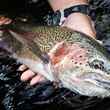
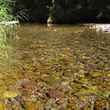





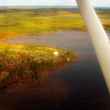



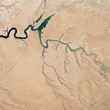
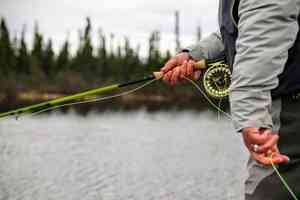

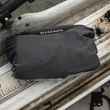

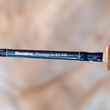



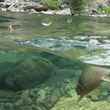




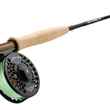

Comments
Rob Goodwin replied on Permalink
I'm a North West steelhead and trout fly fisherman who loves cold, clear moving water. During my work career I was hosted many times in Northern Minnesota and Way Northern Canada and learned to love fishing for Northerns. The first few trips were casting for Walleye and Northerns. Later, I had many great experiences fishing for Northerns with a fly. It is as exciting as the article states. Maybe not the same as winter steelhead but immensely satisfying.
Our guides would keep a few small Northerns for shore lunch which was delicious. To my taste, Walleye and Northern both make great lunch fare. I never saw anyone keep a Northern to take home, just the opposite of Walleye.
K F replied on Permalink
Being a member of a fly fishing family that has chased trophy pike throughout the world for more than 30 + years I have a keen appreciation for your article. Your insights are on target - pike on the fly is a ballistic blast!
douglas balfour replied on Permalink
Chris, I have lost a lot of gaudy Silver flies to those toothy bastards in the rivers of Alaska. We do not fish for silvers with 50 lb. leaders. But it was an adventure when you would hook one in the lip and they could not snip your leader.
Anonymous replied on Permalink
real men dont use jaw spreaders. even little girls can chin a pike. respect the animal! learn to handle them properly.
Pages